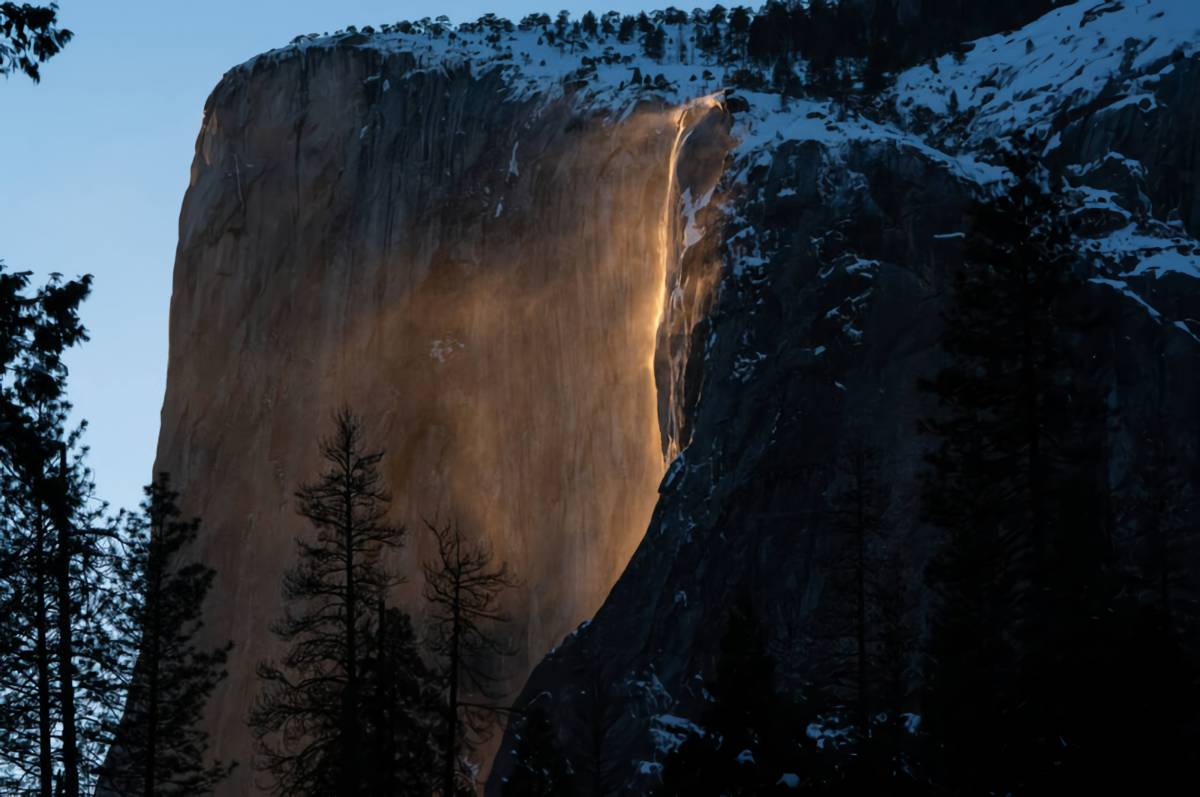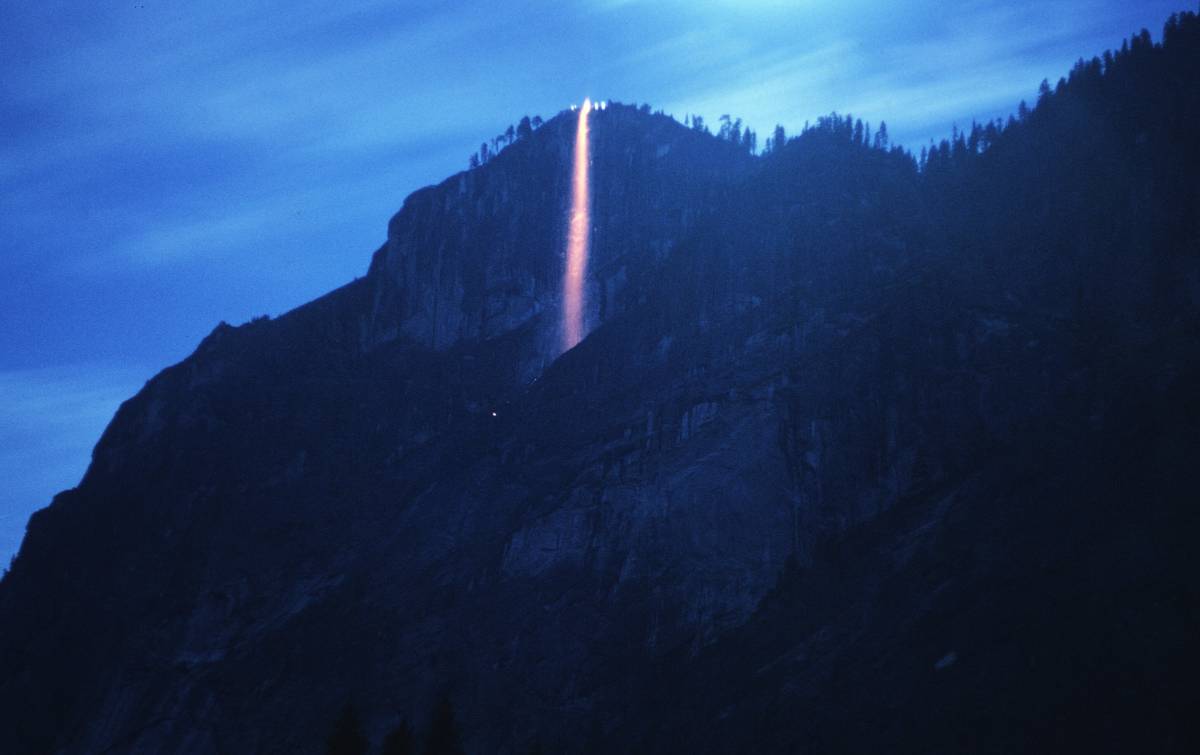It is possible to see a unique natural display at Yosemite National Park, California, between the months of December and April, when the snow on the mountains melts and creates tiny waterfalls over rock ledges. With the right angle of sunlight, the water takes on the appearance of molten rock—and this is a rare natural phenomenon.
Horsetail Fall
Yosemite’s 1575-foot-high (480-meter) Horsetail Fall, located in the park’s namesake valley, is a tiny waterfall that rarely attracts visitors. No one really goes there because it’s not a popular destination. That holds true for the vast majority of the calendar year.

But if the things align mostly in February, Horsetail Fall becomes a popular tourist destination. At least the flames are gushing down the fall. However, the flames you see are really an optical illusion. This natural occurrence has a one-of-a-kind optical effect.
Near sunset, they gather at the east foot of El Capitan, a popular climbing rock, to watch as evening falls and sparks fly down the narrow waterfall, transforming it from a trickle into the Firefall.
The firefall occurs on El Capitan’s eastern face
Visitors to the park, originally opened in 1890, refer to these waterfalls as “Horsetail Falls.” The magnificent waterfalls, notably the one above the renowned climbing rock El Capitan, are perennially popular photo shoots. The “Horsetail” transforms into a “firefall” only under ideal circumstances, including warm enough weather for snow to melt, sufficient water, and bright enough sunlight.
After a weekend, the angle of light incidence shifts due to the Earth’s axial tilt, and the firefall stops. When it happens, the “firefall’s” delicate equilibrium is destroyed.
Yosemite Firefall requires a lot of things to work together

Such an endeavor needs ideal circumstances. Firstly, the snow on the 3,000 feet (900 m) high rock must melt in order for the Horsetail Fall to flow. In addition, the sun’s rays need to be able to reach the waterfall on the eastern rim of El Capitan without being blocked by clouds. A single cloud or haze particle may totally nullify or significantly lessen the impact.
Thus, the Yosemite Firefall is created on the Horsetail Fall when the sky is clear and the sun is low in the horizon, reflecting off the water and creating a lava-like colors. Some weeks, though, the snowfall is very heavy, feeding the Horsetail Fall. The angle is always the key. The sun’s arc across the sky has to be favorable. This means that there are just a few of days usually in February when the phenomenon may be seen.
Lasts only for a few minutes
When conditions are just right, the waterfall will become a brilliant shade of orange for a short period of time in the evening. After a shot of this illuminated waterfall was released in 1973 by American nature photographer Galen Rowell, tourists from all over the globe began flocking to the California national park. They’ve got their tripods ready, and their trigger fingers are itching for the Yosemite Firefall to appear.
In any case, tourists will need to trek a little bit to reach Horsetail Falls. Bring a headlight or torch, bundle up for at least a mile of hiking, and remember to wear sturdy shoes.
The favorite of photographers
It’s a game of roulette for the many tourists and photographers that go to Yosemite Park just to see the Yosemite Firefall, since it’s never certain that “Firefall” will occur on any given year. Rangers who worked over 10 years in Yosemite only saw the Horsetail firefall a few times. Thus, it depends entirely on chance.
Nevertheless, some 400 visitors from England, India, China, and all over the world visit each year to see the Yosemite Firefall.
About 3 million people visit Yosemite National Park every year. It is one of the United States’ 59 designated national parks, and it is well-known for a variety of natural features, including its huge sequoia trees and rich biodiversity.


